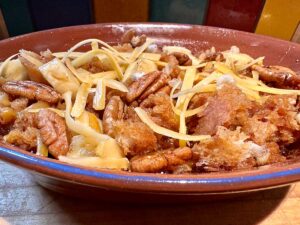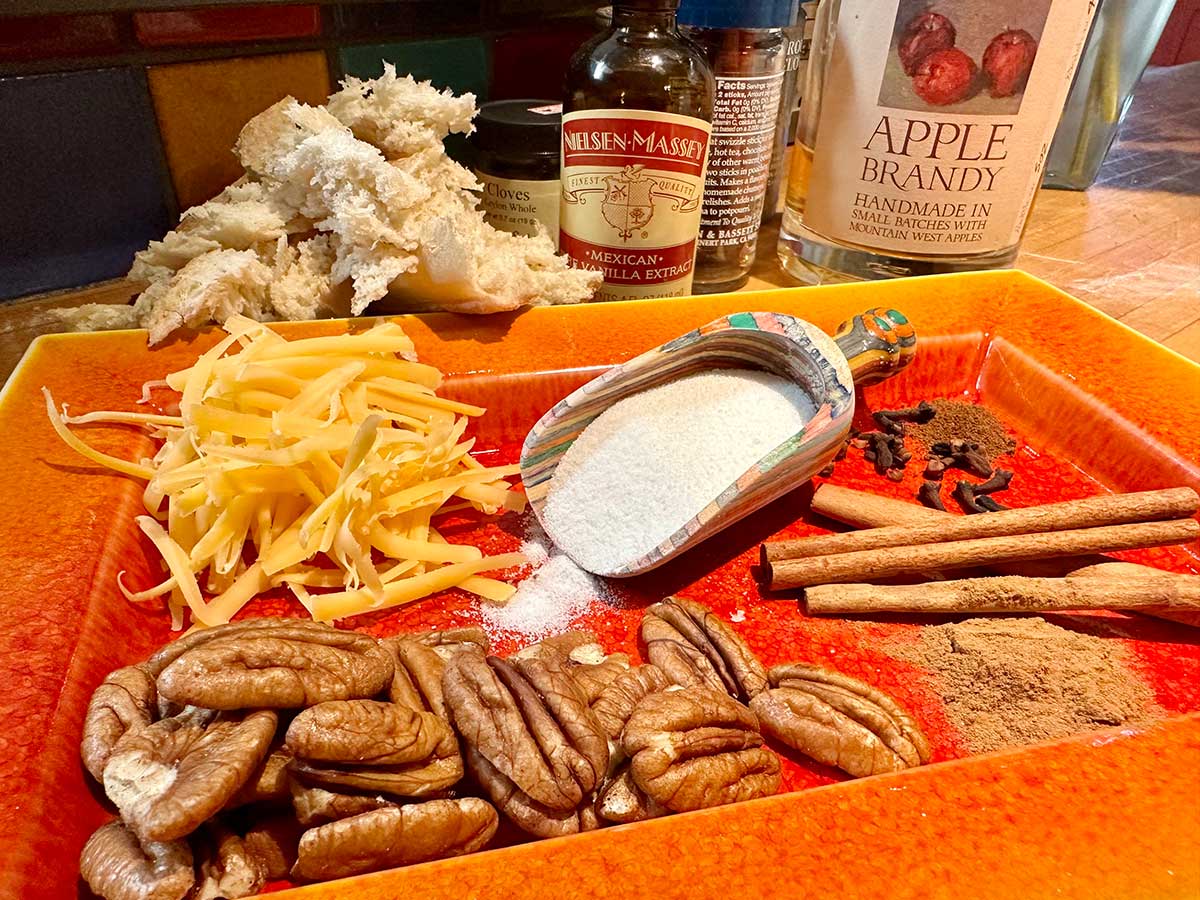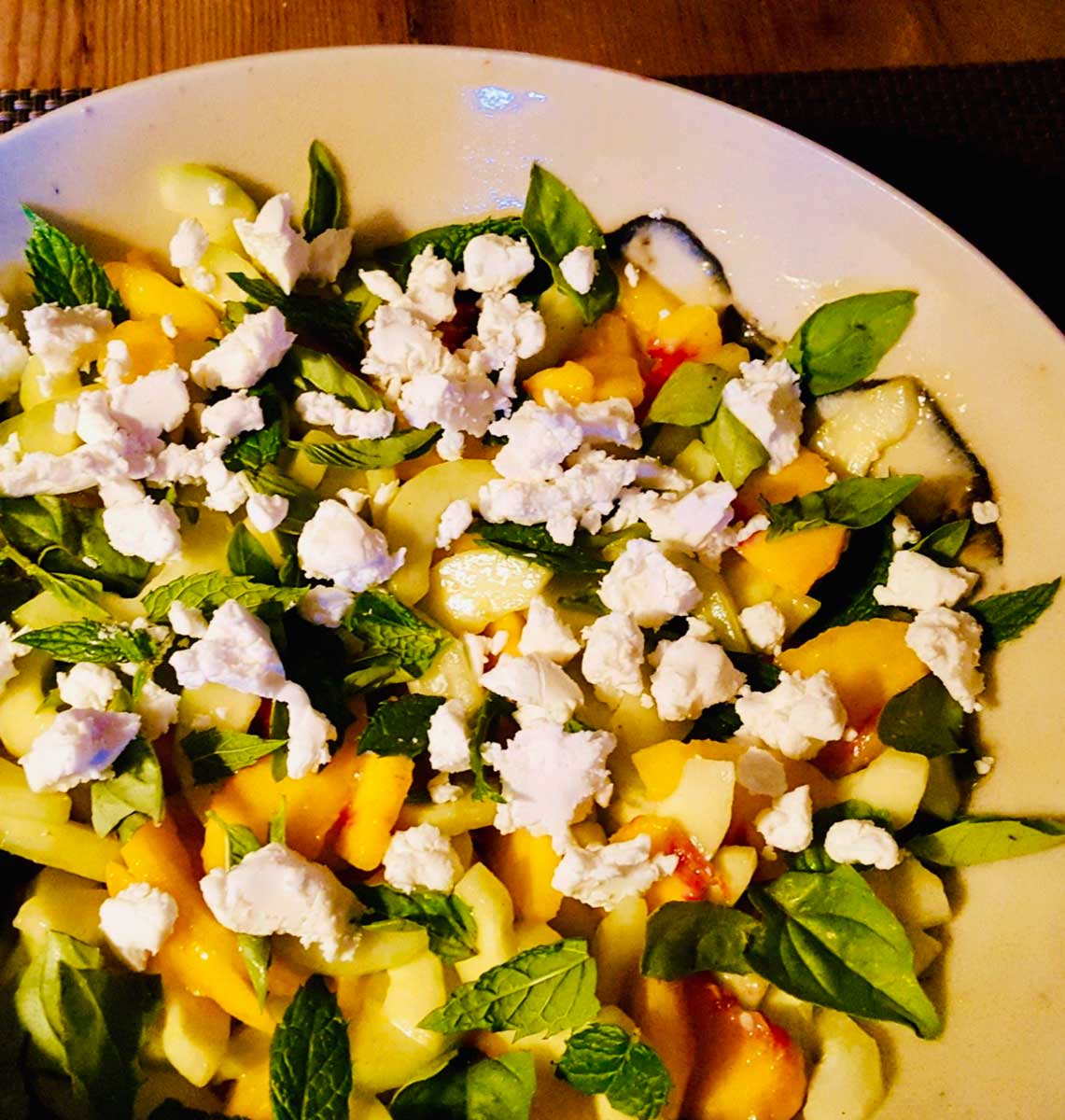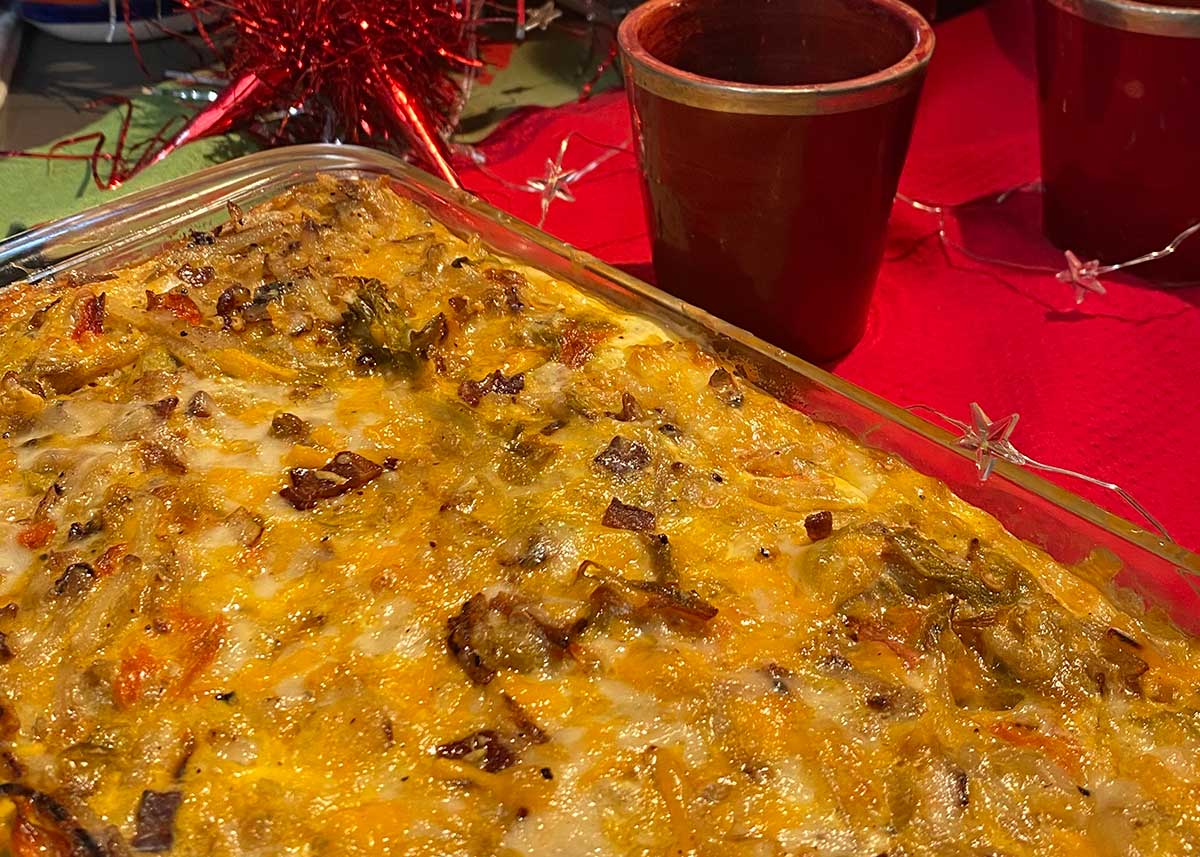I still remember the first time I had capirotada, even though it was 40 years ago. I was enjoying my first meal at a home-style restaurant in Santa Fe, the now long-defunct Maria Ysabel. Several things intrigued me about the restaurant. It was owned and operated by Bell Mondragon, at the time, the wife of our lieutenant governor. The Second Lady of New Mexico was cooking up a storm in the kitchen!
That evening was also the first time I was introduced to several dishes more common on home tables than in the cafes I frequented in the few years I had resided in the state. The meal started with chubby little tostadas, gorditas topped with a smear of pinto beans, and crispy chicharrones, the succulent local version of fried pork rinds. They sure beat chips and salsa.
A Delicious Dessert

Accompanying the more familiar main dishes was a bowl of creamy papas, chunks of potato cooked down with green chile and tomato. And then came the knock-out dessert, capirotada. Before we had started the family-style meal extravaganza, Bell had said we’d be finishing with bread pudding.
Every culture that has bread, has some version of a dish to make use of its leftovers. What I knew as bread pudding was from the French style that made its way to New Orleans and elsewhere, a rich mix of cream and eggs binding the marquee ingredient. The version set down in front of me was from a different branch of the family tree. Wow, the simple white sandwich bread was layered with a deeply caramelized syrup. It looked more like a French toast casserole to this neophyte. It was crisp on top and my spoon dug into a creamy moist center. Binding it together was a mild orange Cheddar-style cheese. My memory gets a little sketchy after that. I’m not sure if that version had brandy-soaked raisins or chunky pecans, or maybe apples, all commonly added by New Mexican cooks, I discovered once I started looking for this dessert.
Other Versions
I talked to my local friend Lenore Tapia (now Tapia-Baker) who told me her family — like many others — always had the pudding for Easter, as well as other celebrations. Her family, however, called it sopa, as in sopa seca, the term for something cooked in liquid until most of it has evaporated or absorbed by a starchy ingredient, maybe pasta — or bread. The longtime association with Easter has to do with the symbolism of bread with the body of Christ.
Capirotada History
More research led me to Spain and back to the Middle East, where this bread pudding was sometimes a savory-sweet dish, with meat included in it. Spaniards’ Lenten diets called for abstention from meat. Some folks must have decided afterward that they liked the mixture better without meat, and never added it back in. Sometimes, however, tomatoes would be included, again bridging the sweet-savory balancing act.
The dish migrated to Mexico, where it’s often made today with leftover bolillo rolls. It used to be common there, and in New Mexico, to use unrefined cones of dark brown sugar called piloncillo. These days, it’s more standard to caramelize white sugar, as is done for topping flan. Some cooks make the caramel syrup and then mix in some brown sugar for a deeper flavor.
New Mexico Capirotada
Around New Mexico, our abundant pecans are the most common nut that I’ve found, but the fruit might be fresh or dried apples, apricots, or pears. Raisins are frequently a part of the mix, sometimes soaked first in brandy. Any excess brandy gets poured in too. Those fruits have grown here for some centuries, since the Spanish colonized what became New Mexico.
Today though, bananas and coconut aren’t unheard of. If you grew up eating this, you likely already have a favorite family version. If so, stick with it. However, if this is new to you, please give my recipe a try. Not only is it tasty any time of year, but your kitchen will smell wonderful from the simmering syrup and spices.
Capirotada Recipe

Serves 8
½ cup raisins
1/3 cup brandy
1 pound basic store-bought white bread, or country loaf, torn into bite-size pieces
2 cups sugar
2½ cups hot water
1 cup apple cider or additional water
6 tablespoons (¾ stick unsalted butter)
2 teaspoons pure vanilla extract
1 teaspoon ground canela (Mexican cinnamon) or other cinnamon
Pinch or 2 of ground cloves
1 apple, peeled and chopped fine, optional
½ cup chopped pecans, toasted
1½ cups (6 ounces) grated Colby, mild Cheddar, or Monterey Jack cheese
Softly whipped cream, optional
- Preheat the oven to 350° F. Butter a baking dish approximately 9 X 12 inches.
- Place the bread on a baking sheet and bake for about 20 minutes, until lightly crisp and golden.
- Meanwhile, place the raisins in a small bowl and pour the brandy over them. Set aside to soften.
- Pour the sugar into a large heavy saucepan. Warm it over medium-high heat until the sugar melts and turns a deep golden brown, about 8 to 10 minutes. Stir occasionally, to assure even melting. Pour the water into the molten sugar, standing back from the pan to avoid the steam that will rise as the water hits the sugar. The syrup mixture will partially solidify. Continue cooking until it becomes liquid again, stirring occasionally. Add the cider, butter, vanilla, and spices to the syrup.
- Dump one-half of the bread into the baking dish. Scatter with one-half of the apple, pecans, cheese, and raisins. Repeat with the remaining bread, apple, pecans, cheese, and raisins, including any brandy not absorbed by the fruit, and push everything down into the bread just a bit.
- Ladle the syrup slowly over the bread mixture. The syrup should be about level with the top of the bread. If any bread pieces aren’t coated, push them into the syrup.
- Bake for 20 to 25 minutes, until the syrup has absorbed, the cheese has melted, and some of the top bits are crusty. Serve the pudding hot, topped with whipped cream if you like.
Recipe adapted from Tasting New Mexico © 2012 Cheryl Alters Jamison and Bill Jamison, Museum of New Mexico Press.
 Story and photos by Cheryl Alters Jamison.
Story and photos by Cheryl Alters Jamison.
Four-time James Beard Foundation Book Award-winning author Cheryl Alters Jamison is the host of Heating It Up on KTRC and is now the “queen of culinary content” for SantaFe.com. Find new stories about the Santa Fe food scene each week on SantaFe.com.















